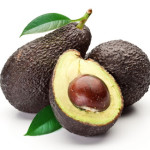 Projections put the retail price of hass in the local market to reach KSH30 (approx. $0.3) by mid-2019. This is double the current farmers’ market prices in Kenya. The reason is because of the many value addition purposes that visit upon the fruit each year. Currently, it is a source of essential avocado oil, vegetable fat, cosmetics and soap.
Projections put the retail price of hass in the local market to reach KSH30 (approx. $0.3) by mid-2019. This is double the current farmers’ market prices in Kenya. The reason is because of the many value addition purposes that visit upon the fruit each year. Currently, it is a source of essential avocado oil, vegetable fat, cosmetics and soap.
Value Addition Points
Virtually every part of the Kenya hass avocado fruit has a role to play in the processing chain apart from the skin. The seed, for instance, makes animal food. After removing the flesh, the pit is crushed and processed with other ingredients to make feed for chicken. The skin also does not go to waste. By large measure it goes into making farm compost.
Making Extra-virgin Essential Oils
The flesh undergoes cold pressing to produce a viscous oil that is multipurpose. Most of the fruits that feature in processing are usually rejects from the export market. They are usually fresh for the most common reason of the recall is blotches on the skin. The processing of the avocado involves four key steps:
1. Pitting: this involves the removal of the seed after cutting open the flesh.
2. Pounding the flesh into paste to form pulp that can be used for oil extraction.
3. Melaxing or heating the content for 40 to 60 minutes at temperatures of between 45 and 50° Celsius.
4.Centrifugal separation of the lighter oil from the water content in a decanter. The oil from a single hass avocado is usually 30% of its total weight.
After extraction, the color of the pulp is usually a sparkly green. This is usually due to the strong content of chlorophyll, the pigment that leads to green pigmentation. The other reason is the presence of carotenoids.
Making Soap
Kenya hass avocado also features in soap making The reasons include the fact that the fruit has no much sugar. Sweet-tasting fruits make soap products melt fast due to internal heat accumulation. In the making of soap, hass avocado requires the following processes:
In the preliminary stages, one prepares the pounded pulp of the avocado. This is then mixed with lemon oil or other concentrates. The addition of the pulp reacts with the chemicals such as soda ash and during the heating phase glycerin forms which is the source of the glossy gel in soap.
1. The first real step is to heat the solution with sodium lactate and butter or super fat (3 percent concentration), at 110° Celsius until the formation of thick stuff.
2.The next step involves machine or even manual molding if it is homemade soap. This has the greenish color of avocado flesh with its glossy look.
3.The penultimate step is the addition of alcohol or soda ash, before placing the solution into a refrigerator for at most one day. This is followed by up to four days at normal temperature for the soap to harden.
4. Finally, the hass avocado-enriched bar of soap is ready for cutting into marketable bars after they have rested for a month to cure.
Cosmetics and Lotions
In the making of lotions, hass avocado oil features as an enrichment. However, it is still possible to make the same at home. All a person needs is a partially ripened fruit. 33 percent ripeness is the ideal as it is neither too hard nor too soft. The next steps involve cutting the fruit into pie-like pieces after peeling and pitting it. One then pounds it into a paste before adding the white of an egg. Lemon extract is another essential addition to the mixture. It combines well with the measure that has been put into it. The paste can serve as homemade hand oil.
Therefore, taking advantage of the hass season which runs from March each year in Kenya presents a world of value addition for all stakeholders. Farmers earn even when their fruits do not make the market through processing. Importers obtain the best fruits from the country, while exporters are assured of an overseas market during the European window early in the year.

